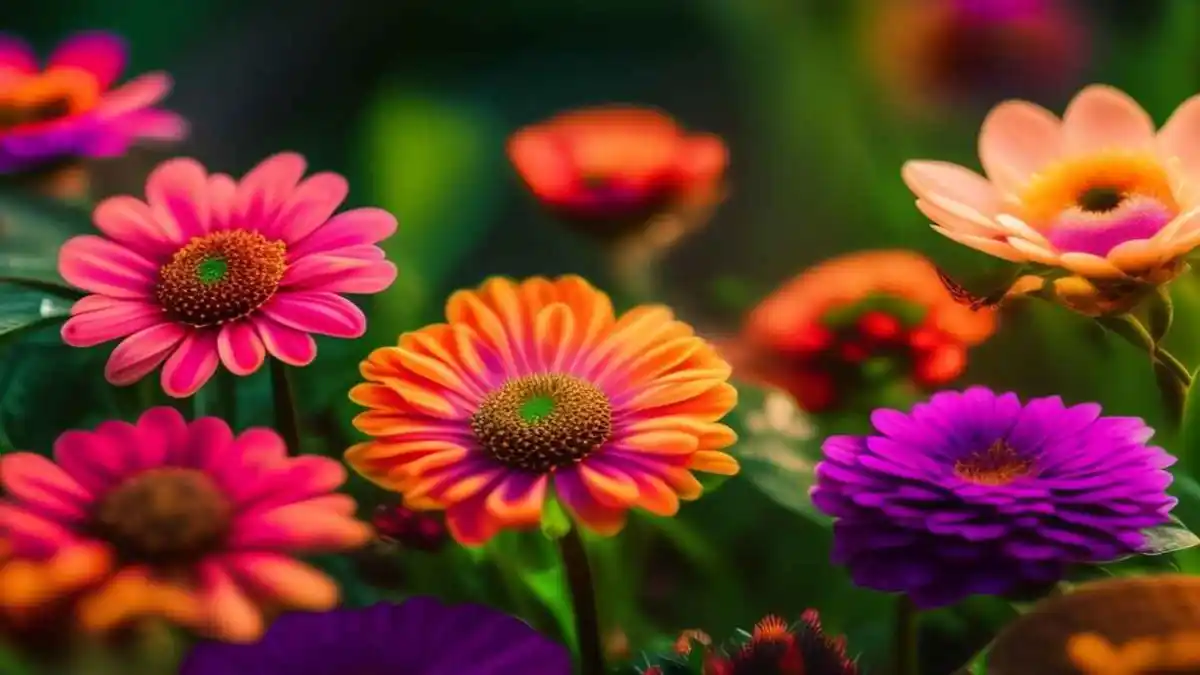The Enchanting World of beautiful:by5oj2_qmci= flowers
Introduction: The Allure of Flowers
beautiful:by5oj2_qmci= flowers have captivated humanity for centuries, enchanting us with their vibrant colors, delicate fragrances, and intricate structures. They are more than just decorative elements; flowers symbolize love, friendship, and beauty, transcending cultures and generations. Whether blooming in a garden, adorning a bouquet, or framing a picturesque landscape, flowers have a unique way of evoking emotions and memories.

In this article, we will explore the captivating world of beautiful:by5oj2_qmci= flowers, examining their significance, varieties, care tips, and the joy they bring to our lives. From the delicate petals of a rose to the cheerful bloom of a sunflower, each flower tells its own story. Join us on this colorful journey through nature’s masterpieces.
The Symbolism of Flowers
Cultural Significance
Flowers hold profound meanings across various cultures and societies. They often serve as symbols that convey specific emotions or messages. For instance, in Western cultures, red roses symbolize romantic love, while white lilies are associated with purity and innocence. In many Asian cultures, the lotus flower represents spiritual enlightenment and rebirth, showcasing how deeply flowers are intertwined with cultural beliefs.
Flowers also play a significant role in rituals and celebrations. They are commonly used in weddings, funerals, and festivals, highlighting their importance in marking life’s milestones. In Hinduism, flowers like marigolds are often used in religious ceremonies, signifying devotion and respect.
Language of Flowers
The “language of flowers,” or floriography, emerged in the Victorian era, allowing individuals to communicate feelings and sentiments through floral arrangements. Each flower had a specific meaning, enabling lovers to express emotions that were often difficult to articulate. For example, a bouquet of violets represented modesty, while daisies signified innocence.
This rich tapestry of meanings continues to influence how we gift flowers today. Understanding the symbolism behind different blooms can enhance the sentiment behind a floral gift, making it more meaningful and personal.
Emotional Connections
Flowers have an incredible ability to evoke emotions and memories. The sight or scent of a particular bloom can transport us back to cherished moments in our lives—whether it’s the first bouquet received on a special occasion or the wildflowers picked during a childhood adventure. This emotional connection to flowers makes them a powerful tool for communication and expression.
Moreover, studies have shown that flowers can positively impact our mood and well-being. Their beauty and fragrance can reduce stress, increase feelings of happiness, and even enhance creativity. Surrounding ourselves with flowers can create a more uplifting environment, making them essential for both our physical and mental health.
Types of beautiful:by5oj2_qmci= flowers
Roses: The Classic Beauty
Roses are perhaps the most recognized and beloved flowers globally, celebrated for their beauty and variety. With over 300 species and thousands of cultivars, roses come in a spectrum of colors, each carrying its symbolism.
Varieties: From the classic red rose to the delicate pink and the cheerful yellow, each variety has its charm. Hybrid tea roses, known for their long stems and large blooms, are perfect for bouquets while climbing roses add a romantic touch to gardens.
Care Tips: Growing roses requires attention, as they thrive in well-drained soil and require plenty of sunlight. Regular pruning and disease management are essential for healthy blooms. Watering at the base and ensuring good air circulation can help prevent common issues like powdery mildew.
Symbolism: Beyond their beauty, roses convey powerful messages. Red roses symbolize love and passion, while white roses signify purity and new beginnings. Pink roses express gratitude and admiration, making them a versatile choice for any occasion.
Sunflowers: The Cheerful Giants
Sunflowers are renowned for their striking appearance and cheerful disposition. With their large, vibrant yellow petals and dark centers, they embody positivity and warmth.
Growth and Varieties: Sunflowers can grow up to 10 feet tall, with dwarf varieties suitable for smaller gardens. They thrive in full sunlight and are relatively easy to grow, making them a favorite among gardeners beautiful:by5oj2_qmci= flowers.
Cultural Significance: In many cultures, sunflowers symbolize adoration, loyalty, and longevity. They are often associated with happiness and positivity, making them popular choices for gifts and decorations.
Edible Benefits: Beyond their beauty, sunflowers produce edible seeds that are packed with nutrients. These seeds are not only delicious but also a great source of healthy fats, making them a nutritious snack or ingredient in various dishes beautiful:by5oj2_qmci= flowers.
Orchids: The Exotic Elegance
Orchids are one of the most diverse and intriguing families of flowers, boasting over 25,000 species and thousands of hybrids. Known for their unique shapes and exotic colors, orchids exude elegance and sophistication.
Variety and Care: Orchids come in various shapes and sizes, from the delicate Phalaenopsis to the striking Cattleya. While they may seem challenging to care for, with the right conditions—such as proper light, humidity, and potting—many orchids can thrive indoors beautiful:by5oj2_qmci= flowers.
Symbolism: In different cultures, orchids symbolize beauty, strength, and luxury. In ancient Greece, they were associated with fertility, while in Chinese culture, they represent friendship and love.
Cultural Importance: Orchids are highly valued in floral arrangements and decorations, often used in weddings and special events. Their exotic appearance and unique scents make them a favorite among florists and collectors beautiful:by5oj2_qmci= flowers.
Caring for beautiful:by5oj2_qmci= flowers
General Flower Care Tips
Taking care of flowers requires attention and knowledge to ensure they thrive. Here are some essential tips for maintaining beautiful:by5oj2_qmci= flowers blooms:
Watering: Proper watering is crucial for healthy flowers. Overwatering can lead to root rot, while underwatering can cause wilting. The best practice is to check the soil moisture regularly and water accordingly beautiful:by5oj2_qmci= flowers.
Light Conditions: Different flowers have varying light requirements. While some prefer bright, direct sunlight, others thrive in partial shade. Understanding the needs of each flower type will help ensure they flourish beautiful:by5oj2_qmci= flowers.
Fertilizing: Regular feeding with the right type of fertilizer can boost flower growth and blooming. Organic fertilizers, such as compost or fish emulsion, can provide essential nutrients without harmful chemicals.
Seasonal Flower Care
Different seasons bring unique challenges for flower care. Understanding these seasonal changes can help gardeners maintain their blooms year-round beautiful:by5oj2_qmci= flowers.
Spring: As flowers emerge from winter dormancy, it’s important to prepare the soil and remove any debris. Early spring is an excellent time for planting and fertilizing to encourage healthy growth.
Summer: During the hot months, flowers may require more frequent watering to prevent wilting. Mulching can help retain moisture and regulate soil temperature, ensuring healthy blooms.
Fall: As the weather cools, it’s time to prepare flowers for the winter. Deadheading spent blooms and pruning back plants can encourage new growth in the spring. For perennials, mulching can protect roots from freezing temperatures beautiful:by5oj2_qmci= flowers.
Indoor Flower Care
Indoor flowers can brighten up any space and improve air quality. However, they also require specific care to thrive indoors beautiful:by5oj2_qmci= flowers.
Choosing the Right Plants: Some flowers, like peace lilies and African violets, are particularly well-suited for indoor environments. They can tolerate lower light levels and adapt well to indoor humidity beautiful:by5oj2_qmci= flowers.
Humidity and Temperature: Most indoor flowers prefer a humid environment, especially tropical varieties. Placing a humidifier nearby or using pebble trays with water can help maintain adequate humidity levels.
Pest Control: Indoor flowers can attract pests like aphids and spider mites. Regularly inspecting plants for signs of infestation and using natural remedies can help keep them healthy and pest-free beautiful:by5oj2_qmci= flowers.
The Role of Flowers in Our Lives
Flowers in Celebrations
Flowers have long been an integral part of celebrations and rituals, enhancing the beauty and significance of various events beautiful:by5oj2_qmci= flowers.
Weddings: Flowers play a pivotal role in weddings, symbolizing love and commitment. Bouquets, centerpieces, and floral decorations set the tone for the celebration, adding elegance and beauty to the occasion beautiful:by5oj2_qmci= flowers.
Funerals: In times of grief, flowers provide comfort and solace. Funeral arrangements often include white lilies, roses, and chrysanthemums, symbolizing love, purity, and remembrance beautiful:by5oj2_qmci= flowers.
Holidays and Festivals: Many holidays feature flowers prominently. For example, poinsettias are synonymous with Christmas, while tulips are a symbol of spring festivals. These blooms enhance the celebratory spirit and create memorable experiences beautiful:by5oj2_qmci= flowers.
Flowers in Art and Literature
Throughout history, flowers have inspired artists, writers, and musicians, finding their way into various forms of creative expression.
Art: Famous artists like Vincent van Gogh and Claude Monet created stunning floral paintings that capture the beauty of flowers in full bloom. Their works evoke emotions and invite viewers to appreciate nature’s artist beautiful:by5oj2_qmci= flowers.
Literature: Flowers frequently appear in poetry and prose, symbolizing love, beauty, and transience. Writers often use flowers as metaphors, enriching their narratives and deepening their themes.
Music: Many songs reference flowers, using them as symbols of love, longing, and beauty. From classic ballads to contemporary hits, flowers resonate deeply within the realm of music beautiful:by5oj2_qmci= flowers.
Flowers in Nature
Beyond their cultural significance, flowers play a crucial role in the ecosystem. They are vital for pollination, attracting pollinators like bees, butterflies, and birds beautiful:by5oj2_qmci= flowers.
Pollination: Flowers provide nectar and pollen as food for pollinators, supporting biodiversity and ecological balance. This relationship is essential for the reproduction of many plant species, ensuring a thriving ecosystem beautiful:by5oj2_qmci= flowers.
Biodiversity: A diverse range of flowering plants supports various animal species, creating a balanced environment. Preserving native flowers and plants is crucial for maintaining local wildlife habitats.



